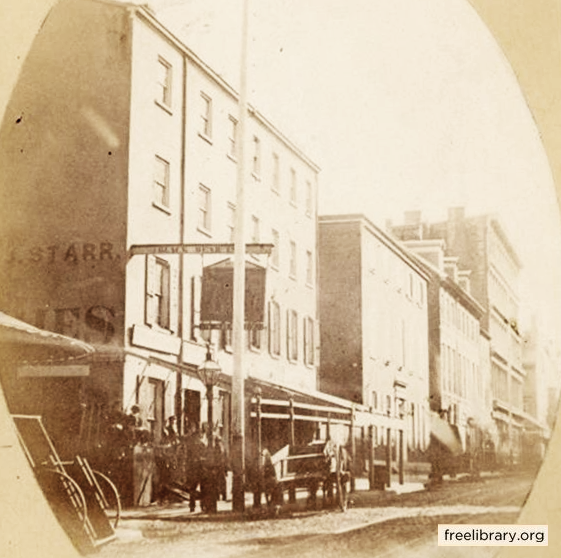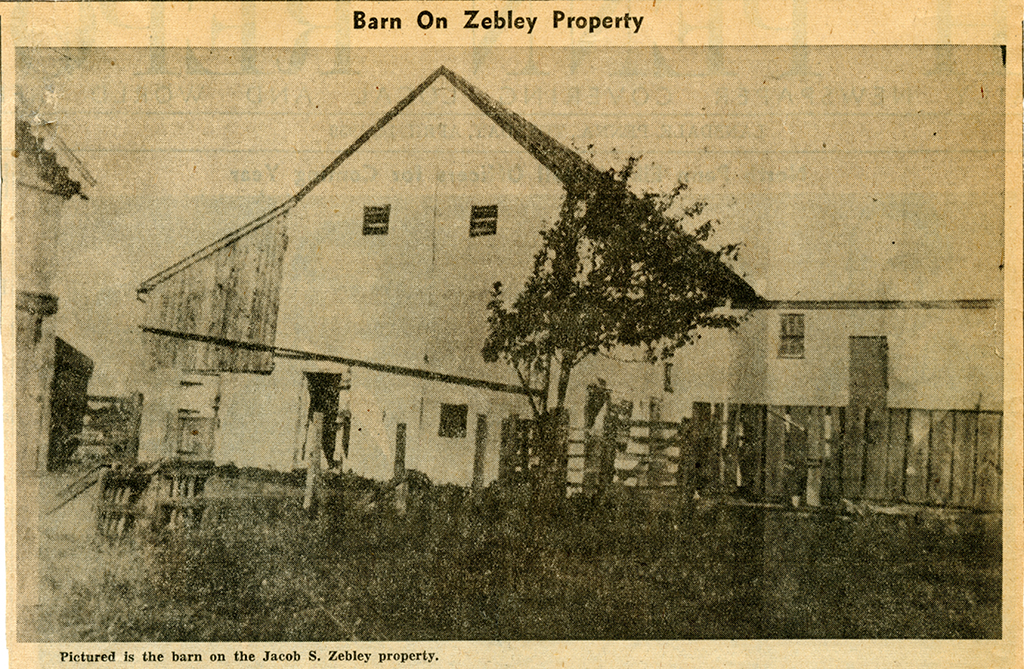In part 5 we said we would devote part of this article to Jacob S. Zebley. So, here it is, quoted directly from the obituary column of the North Wales record under date of March 5, 1904.
“Jacob S. Zebley, a well known resident of Upper Gwynedd, died at his home on the Spring House and Sumneytown Turnpike, near North Wales, on Thursday, March 3rd, in the 90th year of his age. Mr. Zebley was one of our best known and most eccentric citizens, and will long be remembered for the wonderfully clear and accurate stories of days long gone by with which he delighted to entertain his willing listeners. While at all times he displayed a keen interest and appreciation of the history and politics of the present, nothing gave him so much evident pleasure as to regale some of his friends with glowing descriptions of the old merchants and operatic stars of the past, and to picture the joys and adventures of a voyage to South America in the early part of the last century [1800s].
“Mr. Zebley was a man of fine moral caliber, an unswerving friend, and a business man of ideal integrity; his word was absolutely as good as his bond at all times. He was a man of most sincere hospitality, and those who have had the pleasure of meeting him at his table can never forget the feeling of welcome with which his manner filled them.
“The name of Zebley was originally Zebli, but has been variously written Zubely, Zebley and Sibley. The family of Zubli was in a flourishing condition as early as the 16th century, at Berne, Switzerland. During some of the religious commotions of that century a part of the family passed into the low countries, and thence to America—this branch being represented by a Jacob Zubli who was born in 1610, at Berne, and who in 1638 emigrated to this country, and settled on the Delaware. His grandson, Jacob Zubley, 3rd, was born. in 1693, and married an Elizabeth Neff. They were both members of the German Reformed Church at Germantown. Their son Jacob Zebley, 4th, was born in 1733 and died in 1796. He was one of the founders of the Frankford German Reformed Church, and owned and farmed that ground upon which the United States Arsenal now stands. In 1761 he married Ester Madeira. Among other children they had a son Jacob Zebley, 5th, born in 1763, and baptized in the Germantown German Reformed Church. In 1787 he married Wilhemina Hess, and to them were born 13 children. In 1806 he married his second wife Arnie, who bore him five children, among whom was the subject of our sketch, Jacob Seman Zebley.
“Mr. Zebley was born in Union street, Philadelphia, in 1813. His father was a soldier in Washington’s Army, and a wheelwright by trade. He was high Constable of the City of Philadelphia – a chain presented to him bears the date of 1809 – and afterward held a position in the Custom House. Many of Mr. Zebley’s best stories related to those days, when his father chased audacious smugglers as far as Lancaster, and brought them back in a coach and four horses to suffer durance vile in the old prison at Third and Walnut streets, Philadelphia.
“Mr. Zebley’s early education was taken care of by one of the old time school masters who vigorously wielded the rod of birch, and rapped into unwilling heads the mysteries of the three R’s, by name Johnathon Palmer. In 1830 at the age of 17 years, the sight of the lonely Delaware so quickened in him an inborn love of the sea, that he persuaded his Uncle Captain Cowpland, of the Brig Ashman, bound for South American ports, to take him along on the voyage. Returning safely from this voyage, the Captain, upon being requested to let him take another, gruffly told him he was better fitted to pick rags, meaning to enter the mercantile business. This advice was kindly taken, and for several years Mr. Zebley was a clerk in a dry goods store in Strawberry Alley, Philadelphia, working 14 hours a day, with plenty of work in each hour. Later on he became one of the firm of Zebley, Chevalier & Company; doing business on Market street between 4th and 5th streets: this was about 1840.

“In 1839 he married Sara Smith Willis, of Jericho Long Island and removed to Eleventh street, below George—now Sansom street, Philadelphia. Here two children were born to them, Emilie Seaman Zebley in 1840 and Sara Willis Zebley in 1842. The latter died in 1849, the former died in North Wales in 1899. About 1850 Mr. Zebley accepted a position with George S. Stuart & Company, in New York, and became their European buyer, making several trips to England and the Continent. It is probable that at this time Mr. Zebley was one of the best known and most successful salesmen in New York. He was afterward connected with the firm of Libby, Graef and Company and the well known Schuable Brothers of New York. During war times the high tariff put upon imported cloth, shawls and so forth, entirely ruined the business with which he was so well acquainted, and having laid by a modest competency he bought a comfortable home in Elizabeth, New Jersey, and removed there in 1867.
“Then Mr. Zebley became farm hungry, and for ten years he hunted far and near to find one to his liking, until one cold, snowy day in 1879 lie found, very much to his surprise, that he had bid on one in Gwynedd, and had it knocked down to him. For 25 years he gave his love to that farm, and no man ever enjoyed more the coming of the beautiful yellow corn than did be, and many were the days of pleasure he had in sorting out the noblest ears, and carefully piling them up as seed for the following year.

“The death of his daughter, Emilie, in 1899, was a great loss, and only the tireless attention and devotion of his adopted daughter, Louise Zebley Smith, enabled him to live through what would have been in his advance years an unbearable change of life. The one thing Mr. Zebley feared above all others was change. Many will recall how he stormed and protested when he was told that his farm was to be taken into the Borough of North Wales [the borough would annex that portion of Upper Gwynedd Township in 1910, six years after Zebley’s passing]. Had that [annexation] been done, or any other great change of living brought about, he would never have reached the ripe old age of 90. Until the last few years Mr. Zebley was a most faithful member of the Episcopal Church, Gwynedd, and for years held the office of Rector’s Warden. In politics he was an out and out free trader, until during the second term of [president Grover] Cleveland. Rents took such a drop that he thought it was time for him to do what he could to bring back national prosperity, and so from then on he always voted the Republican ticket.
“In Mr. Zebley, Gwynedd has lost a citizen of the type that is only too rare, and a land mark which cannot be replaced.”
This post is sourced from a column entitled Early North Wales: Its History and Its People penned by long-time North Wales resident historian Leon T. Lewis. The article appeared in its original form in the April 14, 1959 issue of the North Penn Reporter.
